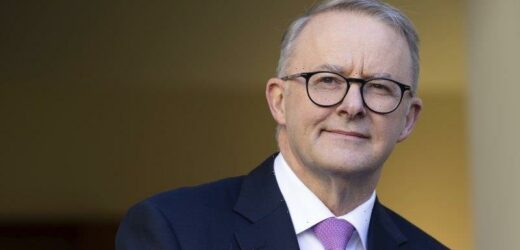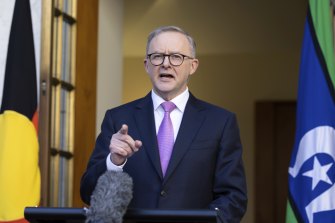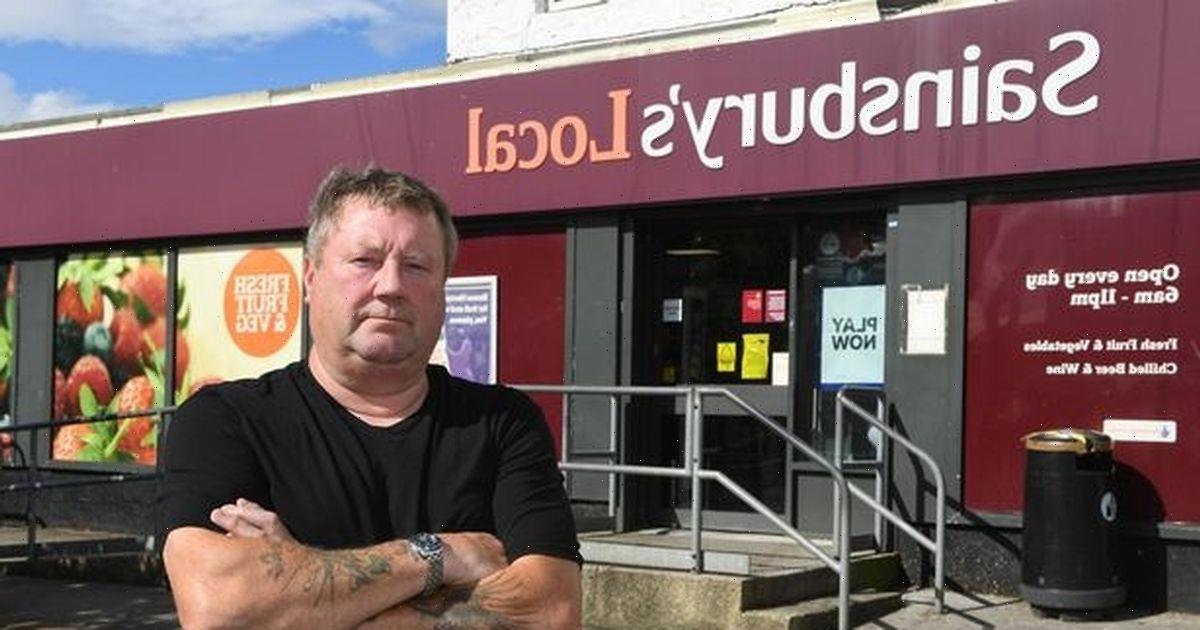Federal parliament will hammer out key details of what an Indigenous Voice to parliament will look like and when a national vote is held, Prime Minister Anthony Albanese says, in a shift from his position that much of the detail would happen after a referendum.
He has indicated the model for the Voice outlined by Professors Marcia Langton and Tom Calma in a 2021 report to the former Morrison government will be central to the debate and design.
Prime Minister Anthony Albanese during a press conference at Parliament House in CanberraCredit:Alex Ellinghausen
Last Saturday, Albanese announced Australians would be asked whether they supported or opposed enshrining an Indigenous Voice in the constitution, and the three sentences that would be added to what he dubbed Australia’s “birth certificate”.
On Sunday, the prime minister said much of the detail about the structure of the Voice would not be known until after the referendum was held as he wanted to avoid a repeat of the failed republic referendum in 1999 when opponents were looking at the detail of the proposal “and saying, ’well, if you disagree with these 50 clauses, if you disagree with one out of the 50 but 49 are okay, vote no. We’re not doing that.”
But on Wednesday Albanese said he wanted to give Australians space to “walk on this journey” and discuss the proposed referendum – which the government has indicated it would like to hold before the 2025 election – and confirmed more detail would be available about the proposed model before a vote.
“I respect people having different views on this. I want a national conversation … what I did on Saturday was provide a framework for the conversation to enable it to move forward,” he said.
“We will need a referendum, legislation has to occur for that to advance, there will be a debate in the parliament as well. Inevitably, as part of that debate, there will be discussion about the extensive work of Marcia Langton and Tom Calma, extensive debate, about what a Voice to parliament might look like in terms of regional structures.”
“A particular model [has] been put forward by them that envisages a national model, but also with equal representation of male and female representatives. Particular quarantining of representation to ensure remote communities are represented and a regional structure as well … that will be advanced during the legislative debate. It will determine, when it is clearer, what an appropriate date for a referendum should be.”
The Langton and Calma model also has electing or appointing members flagged as options.
The prime minister said the media, during the national debate, had a “big responsibility to look at and promote what unites us and to put that in a coherent way whilst recognising there are different views”.
“Overwhelmingly, this is an opportunity for national unity. Do I expect every Australian on the roll to vote yes? No, I don’t. And that is important that people are able to express their views. But overwhelmingly, this is a sensible proposition.”
A number of Coalition MPs, including Jacinta Nampijinpa Price, Tony Pasin, Claire Chandler and Phillip Thompson have demanded more detail about the proposed Voice and expressed reservations about voting for it, though Opposition Leader Peter Dutton has left the door ajar to bipartisan support.
A Voice to parliament would provide advice on key laws and policies that affect Aboriginal and Torres Strait Islanders.
The model proposed by Calma and Langton had 24 members, comprising two from each state, territory and the Torres Strait and a further five members from remote areas of the NT, WA, Queensland, WA and SA and a Torres Strait Islander living on the mainland.
There would be two co-chairs of different genders who serve two-year terms and who would be paid as the positions would be full-time roles.
The body’s membership would be gender balanced, members would serve four-year terms, with half the membership replaced every two years and a limit of two consecutive terms per member. It would be supported by an independent Office of the National Voice.
The Voice would not provide service delivery functions for Indigenous Australians or manage government programs and a set of “consultation standards” that provide guidance on when, how and on what types of matters the Voice should be consulted by the parliament.
The body would also be linked to separate regional and local Voices that would be developed.
Cut through the noise of federal politics with news, views and expert analysis from Jacqueline Maley. Subscribers can sign up to our weekly Inside Politics newsletter here.
Most Viewed in Politics
From our partners
Source: Read Full Article



